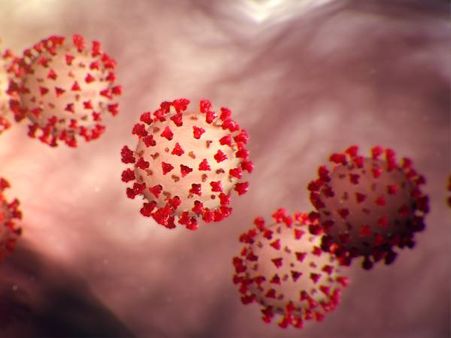Just In
- 3 min ago

- 1 hr ago

- 8 hrs ago

- 17 hrs ago

Don't Miss
- Finance
 HCL Tech Q4 Results, Dividend: EBIT Margins May Drop; Deal Wins, FY25 Guidance To Be Watched
HCL Tech Q4 Results, Dividend: EBIT Margins May Drop; Deal Wins, FY25 Guidance To Be Watched - Sports
 Pakistan vs New Zealand Playing 11: PAK vs NZ 4th T20I Team News, Predicted Lineup And Other Details
Pakistan vs New Zealand Playing 11: PAK vs NZ 4th T20I Team News, Predicted Lineup And Other Details - Education
 JEE Main Result 2024 Out, Telangana's 15 Toppers Shine, Check Statewise List of 56 Candidates with Perfect 100
JEE Main Result 2024 Out, Telangana's 15 Toppers Shine, Check Statewise List of 56 Candidates with Perfect 100 - News
 Mangalsutra Row: Did Indira Gandhi Donate Gold During The 1962 War? The Facts Behind Priyanka's Claim
Mangalsutra Row: Did Indira Gandhi Donate Gold During The 1962 War? The Facts Behind Priyanka's Claim - Movies
 Kota Factory 3 OTT Release Date, Platform: When Will Jitendra Kumar's Web Series Premiere On Netflix?
Kota Factory 3 OTT Release Date, Platform: When Will Jitendra Kumar's Web Series Premiere On Netflix? - Travel
 Escape to Kalimpong, Gangtok, and Darjeeling with IRCTC's Tour Package; Check Itinerary
Escape to Kalimpong, Gangtok, and Darjeeling with IRCTC's Tour Package; Check Itinerary - Technology
 OPPO Find X7 Ultra Camera Deep-Dive: Pushing the Boundaries of Photography on a Smartphone
OPPO Find X7 Ultra Camera Deep-Dive: Pushing the Boundaries of Photography on a Smartphone - Automobiles
 Aston Martin Vantage Launched In India At Rs 3.99 Crore
Aston Martin Vantage Launched In India At Rs 3.99 Crore
COVID-19: How Understanding Fluid Mechanics Can Help Tackle The Virus Spread
Since the COVID-19 spread, the foremost and the mandatory advice given out by the government is 'wear a mask' in all the public places and every time when you step out of the house. This is because coronavirus mainly spreads when an infected person coughs or sneezes. The large air droplets that come out from their mouth enter into another person's mucus membranes (eyes, nose and mouth) and cause them a direct infection.

Respiratory infections also spread when the air droplets settle down on objects or fomites and contaminate others when they touch those objects and then touch their mouth, nose or eyes. Large droplets are visible while small droplets (aerosols) are invisible to the naked eyes. The aerosols remain suspended in the air for a long time and spread when someone breathes them.
This is the reason why governments have implemented social distancing and changed ways of interaction between people to prevent the spread of the COVID-19. Though it was a good step in the beginning, it cannot completely explain how coronavirus spreads quickly. This is where fluid mechanics comes to picture.

Study Based On Fluid Mechanics
According to a report published in the Journal of Fluid Mechanics in 2014 and Experiments in Fluids in 2016, the air droplets that come out from the mouth do not travel independently on their own routes, but are held and carried much further by a warm, moist turbulent gas cloud. [1]
The droplets not only come out by coughing or sneezing, but also when a person speaks or, raise their voices. The size of the droplets remains the same and just the amount increases or decreases according to the action a person performs (speak, cough or sneeze).
According to an infectious disease aerobiologist Donald Milton, a person doesn't have to cough or sneeze to spread the virus to others as the virus are present even in the small aerosols which the infected person breathes out or droplets that come out when they speak. However, it is still not clear whether these aerosols can cause COVID-19.[2]

How COVID-19 Is Linked To Fluid Mechanics
When fluid mechanics was combined with expiratory events of an infected person, the result shows that the air droplets after a sneeze or cough get distorted by the complex air and break into many small pieces that suspend in the air and contaminate them. These small particles are then carried out to further distances compared to larger ones.
The temperature, flow flew and humidity are also some of the factors that decide the distance up to which the droplets can travel. In the result, it was found that the infected droplets can travel to around seven meters (20 feet), considering that they can be travelled much further due to ventilation systems of the building. This challenges the norms of WHO and CDC that mention maintaining a social distancing of only 3-6 feet.

To Conclude:
The message behind this new research is that even wearing a mask and maintaining six feet distance cannot completely limit the spread of the virus as the droplets can release a gas cloud and travel much further- more than 7-8 metres. Understanding fluid mechanics is crucial to stop the spread of the virus as it may help in improving the design and structure of ventilation systems in the building, especially where COVID-19 patients are treated or a person is quarantined.
-
 healthCOVID Surge In India: Do You Need A COVID-19 Booster Shot?
healthCOVID Surge In India: Do You Need A COVID-19 Booster Shot? -
 disorders cureCommon COVID Symptoms In Fully Vaccinated Individuals: What You Should Know
disorders cureCommon COVID Symptoms In Fully Vaccinated Individuals: What You Should Know -
 wellnessMild COVID Linked To Life-Threatening Blood Clots, Increased Risk Of Cardiovascular Disease; Study
wellnessMild COVID Linked To Life-Threatening Blood Clots, Increased Risk Of Cardiovascular Disease; Study -
 wellnessCOVID-19 Variants In India: New COVID Variant May Pose Threat To Elderly People
wellnessCOVID-19 Variants In India: New COVID Variant May Pose Threat To Elderly People -
 basicsCovid-19 Linked To Early Onset Of Periods: What You Need To Know
basicsCovid-19 Linked To Early Onset Of Periods: What You Need To Know -
 wellnessCOVID XBB Variants Of Omicron In India: What You Should Know
wellnessCOVID XBB Variants Of Omicron In India: What You Should Know -
 disorders cureNew Omicron Subvariant BQ.1 Detected In Maharashtra: What You Should Know
disorders cureNew Omicron Subvariant BQ.1 Detected In Maharashtra: What You Should Know -
 disorders cureOmicron BF.7 In India, Risk Of Fresh Wave During Diwali: What You Should Know
disorders cureOmicron BF.7 In India, Risk Of Fresh Wave During Diwali: What You Should Know -
 wellnessCoronavirus Residues Might Be Causing Long COVID: New Study
wellnessCoronavirus Residues Might Be Causing Long COVID: New Study -
 wellnessCentury-Old TB Vaccine Could Be Effective Against Covid-19 And Other Infections: New Study
wellnessCentury-Old TB Vaccine Could Be Effective Against Covid-19 And Other Infections: New Study -
 disorders cureCovid-19 Patients At Risk Of Neurological & Psychiatric Conditions Two Years After The Infection: New Study
disorders cureCovid-19 Patients At Risk Of Neurological & Psychiatric Conditions Two Years After The Infection: New Study -
 wellnessCOVID In Smokers: An Expert Explains
wellnessCOVID In Smokers: An Expert Explains


 Click it and Unblock the Notifications
Click it and Unblock the Notifications



